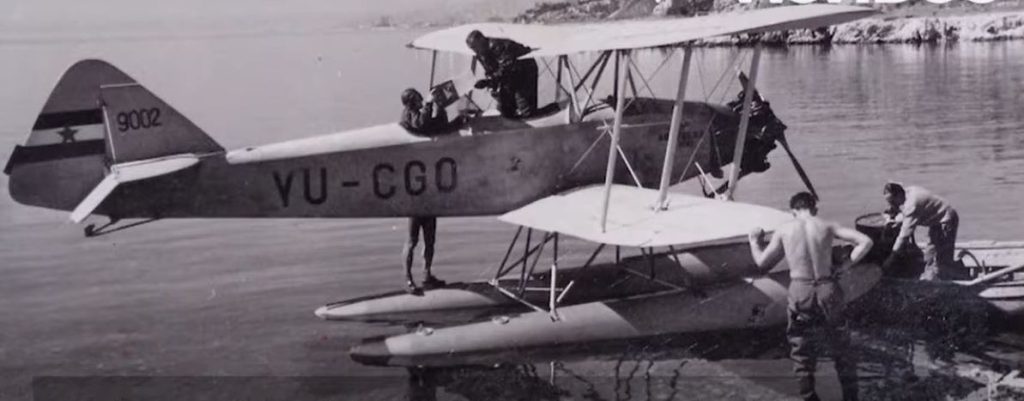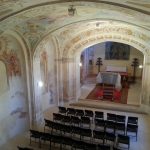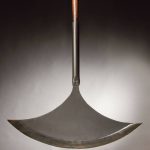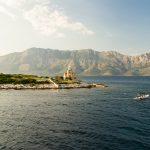December 3, 2020 – It’s been 100 years since Rudolf Fizir, one of the greatest Croatian aircraft designers, came back from Germany to his hometown Ludbreg and started building his own aircraft.
Imagine that seaplanes are connecting all Adriatic islands, while every place on the mainland and the islands has its own airfield. Well, a century ago, one Croatian aircraft designer had exactly the same idea.
Rudolf Fizir, who was one of the greatest men in Croatian aviation history and the most famous and most effective Croatian aircraft designer, was driven by a great desire of converting landplanes into seaplanes. During his life, he constructed a total of 18 types of motorized aircraft (13 planes, 3 seaplanes, and 2 amphibians), some of which were also mass-produced.
Although Croatia has never had its own aircraft industry, Croats have designed and built aircraft from the very beginning of aviation. Although Slavoljub Penkala was the first, the most famous and most effective Croatian aircraft designer was Rudolf Fizir.
https://www.youtube.com/watch?v=499MWAA09v0
First aircraft at 22
Rudolf Fizir was born in 1891 in Ludbreg, where he finished primary school. He attended the Secondary Vocational School in Zagreb, but was soon sent to the Technical High School in Wiener Neustadt, Austria, and then to the Technical Faculty in Toulouse, France.
After leaving Toulouse, he began to realize his dreams at Wismar in northern Germany, on the Baltic coast, where he enrolled at the Aeronautical Engineering Academy. There, in 1913, as a 22-year-old student, he constructed his first aircraft, but the construction of this sport biplane remained only in the plans. He graduated as an aeronautical engineer in 1915. During World War I, he had worked in many car and aircraft factories in Germany and Hungary during which he had amassed extensive experience in aircraft: Fokker Flugzeugwerken in Schwerin, the Hansa und Brandeburg Fleugzeuwerken, and the Hansa-Lloyd-Werk near Berlin.
However, in 1920 he decided to return to his homeland and his hometown of Ludbreg.
From the garage to the construction office
As an undeniably talented engineer from Ludbreg, he was one of the founders of the military and civil aviation in the former Yugoslavia. In Croatia, which was the cradle of aviation, both in the Slavic South and in the Balkans, he did not find the possibility of action, because the new Kingdom of SHS concentrated all aviation activity in Serbia.
When the project to build a Zagreb aircraft factory failed due to Serbian interests, Fizir moved to Novi Sad, where he worked in the air force command. He was simultaneously building his aircraft in his garage in Petrovaradin. His home workshop grew over time and he got a construction office where many young aeronautical engineers and constructors grew up with him.
According to his designs, modifications of trophy military aircraft were made, and thus the small Brandeburgs, the first domestic aircraft, were created. However, the first fully domestic aircraft called the Fizir F1 was constructed in 1925. This aircraft had such good aerodynamics that in September 1927 it won first prize in the Petite Entente competition, in the category of aircraft with engines above 400 hp. More than 50 pieces of these aircraft were mass-produced in various versions.
Fizir also produced five seaplanes under the name Veliki Fizir (Big Fizir) and air amphibians.
Fizir FN – his greatest success
He also built a school two-seater, which proved to be excellent, so it was adopted as the basic school type of the Yugoslav Royal Aeroclub. It was produced in a series with various engines in more than 190 copies, and it was named Fizir N (N for “nastavni”, meaning teaching), and later Fizir FN. Fizir FN is also his greatest success, or as he named it “Zmaj” (“Dragon”). It was a two-seater with dual controls and it was characterized by the ability to fly at low speeds with exceptional stability, which are the characteristics of top school aircraft. It was in use for 30 years after World War II as an instruction aircraft. On various types of his aircraft, nearly a thousand military pilots completed flight school.
Interestingly, his aircraft were often named after the engines he used, such as Fizir-Wright, Fizir-Titan, Fizir-Jupiter, and Fizir-Mercedes. Since his aircraft were mostly made out of wood, they were very economical to produce.
Fizir did not follow the power of the engine but paid more attention to the construction of the aircraft itself, and his aircraft are characterized by simplicity and precise construction.
In 1930, it was produced in a variant with floats for landing on water surfaces, called FN-Hydro, in a series of five copies. It was his first amphibious aircraft, which was also the first domestic amphibious aircraft in history. Fizir was building his seaplanes guided by the idea of connecting all Adriatic islands with seaplane lines and creating a network of airfields on the Adriatic. To this day, only one restored copy has been preserved in the Technical Museum in Zagreb.
He constructed for the rest of his life
By World War II, Fizir had built both a tourist monoplane and the first domestic sports aircraft with a closed cabin. During the war, Fizir served in the NDH Air Force as head of the technical office and head of the technical service. At the same time, he founded the Institute for Aircraft Design at the Technical Faculty in Zagreb where he taught aircraft construction as an associate lecturer. From 1921 to 1940 he was an aircraft designer in Zemun.
After the war, from 1950, he worked as a motor-wheel constructor at the Zagreb ZTM engine factory in Zagreb, which was transferred to Belgrade soon after excellent results. Fizir also worked as a civil aviation inspector and continued to construct aircraft even in pension. He constructed a new sports aircraft and built a four-seater FA-2 amphibious vehicle. It was built in the Croatian Aerotechnical Institute in 1960, and the only copy was used in the Crikvenica Aeroclub. In that work, he was caught by pneumonia, from which he died.
Fizir’s work and contribution are still appreciated today
The end of all his constructive lucidity did not receive recognition in the former Yugoslavia. However, just before his death, he received the highest design diploma from the French. In 1960, the International Aviation Federation (FAI) based in Paris awarded him the prestigious Paul Tissandier Diploma for his overall contribution to world aviation. By the way, this award is given to those who have distinguished themselves by special efforts in aviation in the private and sports field.
Since 1961, a memorial aviation competition Fizir-Cup has been held in his honor in his native Ludbreg, which has kept the tradition to this day.
The building of the Center for Culture and Information “Dragutin Novak” in Ludbreg has been adorned with a memorial plaque with his image since 1971, and the same institution published a book 15 years ago on the occasion of an expert meeting on his life and work. The Ludbreg aero club and a Ludbreg street also bear his name.
Ludbreg High School, in cooperation with the City of Ludbreg, constructed the installation “Fizir’s Plane”, which is on display today in the park of the old town.
To read more about Ludbreg, follow our dedicated page.












